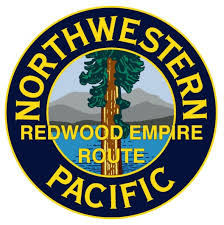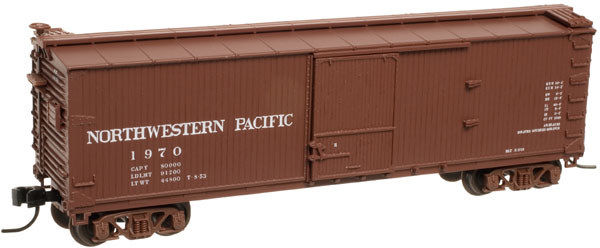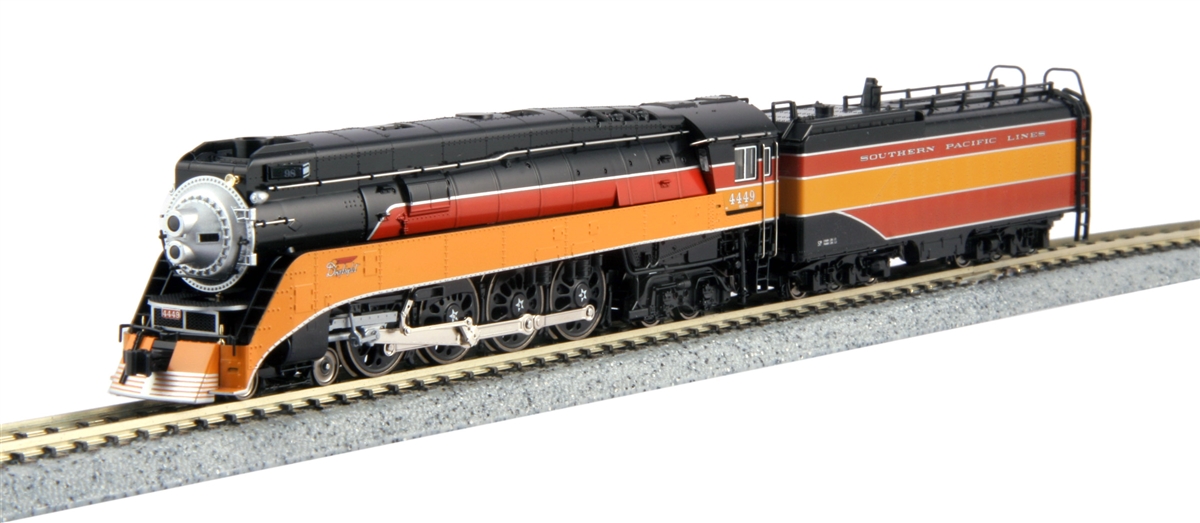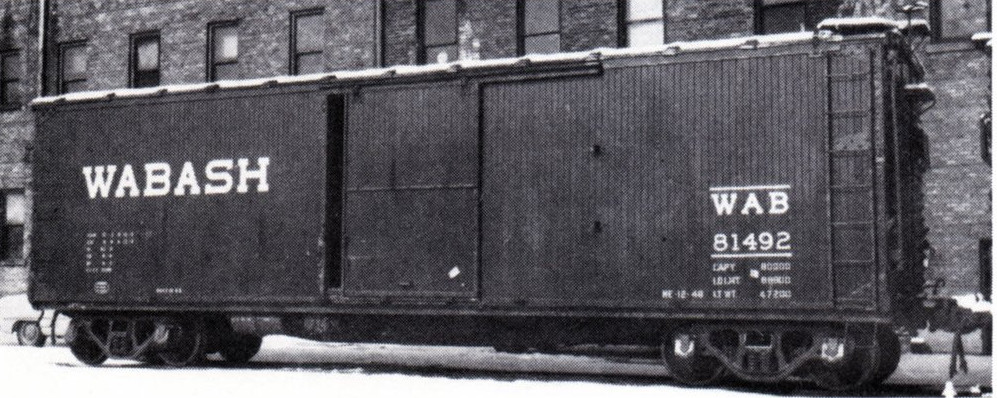Model Information: This car was first produced by Atlas in 2006. It models a interwar double-sheathed wood boxcar as standardized by the USRA during the First World War. Features:
5-5-5 or 7-8 steel ends;
Fishbelly or standard center sill;
Vertical or end mounted brakes;
AccuMate® couplers;
Steel or wood doors.
Prototype History: Double-sheathed means the cars carried wood sheathing both inside and out. The structure that this sheathing is applied over steel framing. The USRA double-sheathed design boxcar had a steel underframe with a monster heavy deep-fishbelly steel center sill. The interior carried horizontal sheathing and the exterior carried vertical sheathing. These are described as steel UNDERFRAME. (but not usually called "steel framed").
Road Name History:  We’ll start with a bit of backstory for this one. By the 1980s, Southern Pacific had run out of patience with their Northwestern Pacific subsidiary which ran from the area north of the San Francisco Bay north to Eureka, California. SP sold the northern half to Eureka Southern and in 1993 leased the southern half to California Northern while selling it a segment at a time to various state agencies. By 1996, the state owned all of the southern segments which were combined under a single agency. They then canceled the lease to California Northern and began operating freight service again between Schellville and Willits under the resurrected name of Northwestern Pacific. GP9’s and SD9’s were painted in a version of SP’s Black Widow scheme with a new NWP logo. The new NWP lost money and washouts and bridge problems that had always plagued the line caused operations to cease in 1998. The line sat idle until 2001 when they attempted to resume service between Schellville and Cotati but the FRA determined that the line wasn’t safe and ordered it closed after just a month. In 2009, the state began rebuilding the line as far as Windsor. Freight trains began running again in 2011 and continue to run today. They are currently rebuilding the line up to San Rafael for use as a new commuter rail operation.
We’ll start with a bit of backstory for this one. By the 1980s, Southern Pacific had run out of patience with their Northwestern Pacific subsidiary which ran from the area north of the San Francisco Bay north to Eureka, California. SP sold the northern half to Eureka Southern and in 1993 leased the southern half to California Northern while selling it a segment at a time to various state agencies. By 1996, the state owned all of the southern segments which were combined under a single agency. They then canceled the lease to California Northern and began operating freight service again between Schellville and Willits under the resurrected name of Northwestern Pacific. GP9’s and SD9’s were painted in a version of SP’s Black Widow scheme with a new NWP logo. The new NWP lost money and washouts and bridge problems that had always plagued the line caused operations to cease in 1998. The line sat idle until 2001 when they attempted to resume service between Schellville and Cotati but the FRA determined that the line wasn’t safe and ordered it closed after just a month. In 2009, the state began rebuilding the line as far as Windsor. Freight trains began running again in 2011 and continue to run today. They are currently rebuilding the line up to San Rafael for use as a new commuter rail operation.

Brand/Importer Information: In 1924 Stephan Schaffan, Sr. founded the Atlas Tool Company in Newark, New Jersey. In 1933 his son, Stephan Schaffan, Jr., came to work for his father at the age of sixteen. Steve Jr. built model airplanes as a hobby and frequented a local hobby shop. Being an enterprising young man, he would often ask the owner if there was anything he could do to earn some extra spending money. Tired of listening to his requests, the hobby-store owner threw some model railroad track parts his way and said, "Here, see if you can improve on this".
In those days, railroad modelers had to assemble and build everything from scratch. Steve Jr. created a "switch kit" which sold so well, that the entire family worked on them in the basement at night, while doing business as usual in the machine shop during the day.
Subsequently, Steve Jr. engineered the stapling of rail to fiber track, along with inventing the first practical rail joiner and pre-assembled turnouts and flexible track. All of these products, and more, helped to popularize model railroading and assisted in the creation of a mass-market hobby. The budding entrepreneur quickly outgrew the limitations of a basement and small garage operation. Realizing they could actually make a living selling track and related products, Steve and his father had the first factory built in Hillside, New Jersey at 413 Florence Avenue in 1947. On September 30, 1949, the Atlas Tool Company was officially incorporated as a New Jersey company.
In 1985, Steve was honored posthumously for his inventions by the Model Railroad Industry Association and was inducted into the Model Railroad Industry Hall of Fame in Baltimore, Maryland. In addition, Steve was nominated and entered into the National Model Railroad Association Pioneers of Model Railroading in 1995.
In the early 1990s, the Atlas Tool Company changed its name to Atlas Model Railroad Company, Inc.
In those days, railroad modelers had to assemble and build everything from scratch. Steve Jr. created a "switch kit" which sold so well, that the entire family worked on them in the basement at night, while doing business as usual in the machine shop during the day.
Subsequently, Steve Jr. engineered the stapling of rail to fiber track, along with inventing the first practical rail joiner and pre-assembled turnouts and flexible track. All of these products, and more, helped to popularize model railroading and assisted in the creation of a mass-market hobby. The budding entrepreneur quickly outgrew the limitations of a basement and small garage operation. Realizing they could actually make a living selling track and related products, Steve and his father had the first factory built in Hillside, New Jersey at 413 Florence Avenue in 1947. On September 30, 1949, the Atlas Tool Company was officially incorporated as a New Jersey company.
In 1985, Steve was honored posthumously for his inventions by the Model Railroad Industry Association and was inducted into the Model Railroad Industry Hall of Fame in Baltimore, Maryland. In addition, Steve was nominated and entered into the National Model Railroad Association Pioneers of Model Railroading in 1995.
In the early 1990s, the Atlas Tool Company changed its name to Atlas Model Railroad Company, Inc.
Item created by: George on 2017-08-27 08:55:12
If you see errors or missing data in this entry, please feel free to log in and edit it. Anyone with a Gmail account can log in instantly.
If you see errors or missing data in this entry, please feel free to log in and edit it. Anyone with a Gmail account can log in instantly.










